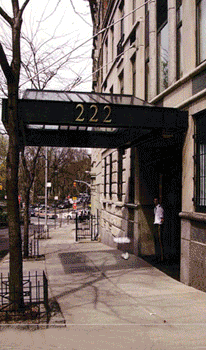Nearly $8,000bn in savings is held in short-term interest-bearing instruments; yet less than half of American families had any sort of formal retirement savings and, for those who did, the median value of those savings was just $45,000. Interest and dividends made up less than 1 per cent of a median family’s income.
Why US savers remain the ‘silent majority’
By Spencer Jakab
Published: July 16 2010 17:17 | Last updated: July 16 2010 17:17
Don’t believe the hype about America’s new culture of thrift – the economic playing field has rarely been tilted so sharply against savers and in favour of spenders. Minuscule short-term yields and rising taxes on passive income are the unpleasant flipside of stimulus.
The fact that a government living in fear of a deflationary recession is happily propping up grasshoppers at the expense of ants should come as little surprise. But only a study of demographics makes it clear why the majority of Americans prefers the status quo.
Economist Irwin Kellner recently evoked Richard Nixon in dubbing savers the “silent majority”. While this is technically true – nearly everyone saves something – only a small subset of Americans are savers in the sense that they prioritise growing their nest eggs or maximising investment income. The rest are understandably far more concerned with goodies such as cheap mortgages, cash for clunkers or extended unemployment benefits than Treasury yields.
In a Federal Reserve survey carried out just before the market crash, less than half of American families had any sort of formal retirement savings and, for those who did, the median value of those savings was just $45,000. Interest and dividends made up less than 1 per cent of a median family’s income, so low yields are little concern. And the threat that fiscal strains will lead to higher taxes are also an abstract threat to more than half of Americans who do not pay income taxes, while recent talk in Washington of consumption taxes has been quashed.
Nearly $8,000bn in savings is held in short-term interest-bearing instruments. Yet an investor buying two-year Treasury notes now receives 0.6 per cent interest, less than a fifth of what he got as recently as 2007, and the return on shorter maturities is virtually zero. Aside from the ruinous solution of spending principal more quickly, savers can only boost returns by purchasing longer-dated securities that are both more volatile and prone to inflation risk or those that have flimsier guarantees such as dividend-paying stocks or corporate bonds. Jeremy Grantham, chief investment strategist at Grantham Mayo Van Otterloo, wrote recently that the income squeeze could well be the genesis of the next investment bubble as this money shifts.
The picture is no brighter for those whose wealth is in bricks and mortar. Americans who own all or most of the equity in their homes have seen it decline by more than a fifth. They should, in theory, be better off than those with big mortgages whose equity has shrunk far faster or vanished entirely, but American borrowers have a unique reset button. Hundreds of thousands of borrowers are strategically defaulting – walking away from their mortgages even when they have the ability to pay, taking advantage of these loans’ non-recourse nature. A recent study by CoreLogic showed that those with mortgages greater than $1m were most likely to default. Real estate tracker Zillow estimates nearly a quarter of US mortgages have negative equity, with a third of recent home sales below their previous purchase price. With nearly all mortgage loans repackaged into federally guaranteed bonds issued by bailed-out government sponsored enterprises Fannie Mae and Freddie Mac, the losses are ultimately borne by taxpayers. Notwithstanding the drubbing this has given their balance sheets, the GSEs have kept the spigots open in what is perhaps the most important but unheralded plank of government stimulus efforts. The Congressional Budget Office calculates that, had all direct and indirect subsidies to these lenders been included in the 2009 federal budget, it would have added $291bn to outlays – more than the combined bail-outs of US banks, carmakers and AIG combined. Add to that annual cost the $103bn subsidy borrowers received last year by being able to deduct mortgage interest and those that own their homes free and clear – once objects of envy in America – look increasingly like patsies.
America’s frugal can be justifiably bitter about years of putting off instant gratification, but life is not fair. Their country needs its spenders to spend, consequences be damned.
Why US savers remain the ‘silent majority’










